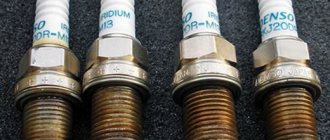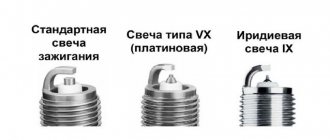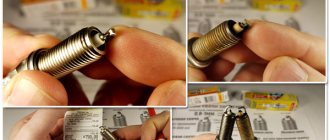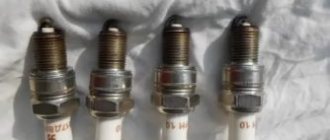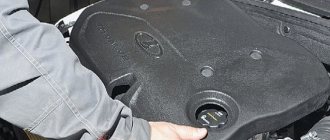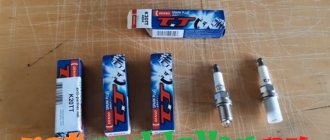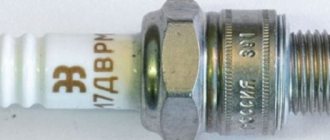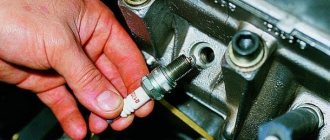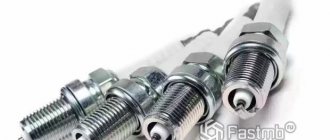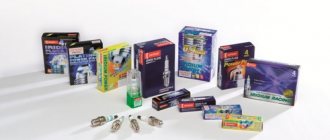Has this ever happened to you - you bought a product from a well-known brand, and then realized that it was a fake? Unfortunately, as with many premium products, this can happen even with NGK SPARK PLUG parts. Moreover, not long ago, specialists from the company’s Technical Service Center were faced with the consequences of using counterfeit CR9EIX spark plugs - engine damage as a result of the melting of the central electrode. To warn its customers, NGK SPARK PLUG has compiled a Guide on how to distinguish a fake by 5 signs.
According to a study published by the European Union Intellectual Property Office (EUIPO), the European economy loses up to 60 billion euros annually as a result of the presence of counterfeit products on the market, which is 7.5% of the volume of goods sold in the EU. And this is not to mention the separate damage suffered by deceived buyers.
But is it really that important that the spark plugs are real? Yes, that's actually true. NGK SPARK Plug technical service specialists have become aware of cases of purchases of NGK CR9EIX spark plugs via the Internet that turned out to be counterfeits. “These spark plugs melted and damaged our customers' vehicle engines. It’s annoying, it costs money, but most importantly, it can be avoided,” says Kai Wilschrey, NGK SPARK PLUG EUROPE Technical Manager for Aftermarket and Aftermarket EMEA at NGK SPARK PLUG EUROPE.
How to distinguish a fake from the original?
“Original NGK CR9EIX spark plugs have an iridium-tipped center electrode. This material has a very high melting point. It’s very hard and durable,” Kai explains. “Fake spark plugs do not have iridium on the central electrode. They have a standard nickel electrode, turned on a lathe, which makes it look like iridium,” he continues. “Therefore, the fake is very fragile and cannot withstand heat. This weak point causes the center electrode to melt and damage the engine.”
How to spot a fake spark plug
For someone uninitiated in this topic, this can be a difficult task. At first glance, a spark plug may be indistinguishable from the original and have all sorts of factory markings, be packaged in branded boxes and be very expensive, but immediately after installation show the first signs of malfunction.
The counterfeit market is based on the gullibility and inattention of buyers to the small details of the goods offered. That is why candle makers are not particularly worried about the complete similarity of their product to the original, which makes the task easier for an experienced eye. Let's look at the main mistakes of such would-be manufacturers using the example of the most common suppliers of spark plugs to the Russian market.
Fake and original NGK spark plugs
NGK spark plugs are considered a fairly popular product of the Japanese company of the same name, which was formed back in 1919. This manufacturer has established itself as one of the best options in terms of price/quality ratio and is in great demand among domestic consumers.
Currently, the production of products with different standard sizes and other characteristics has been established, as a result of which the buyer can quickly select the optimal spark plugs for almost any car or other type of vehicle.
The original NGK spark plug is easier to distinguish than others: you just need to take a closer look at how the electrode is routed. In a high-quality product, it looks like a perfectly straight rod aimed directly at the central contact, but in fake ones it is not smooth and has significant deviations towards the contact.
And so, the following signs will help you when choosing an original product:
- Cost of goods. As you probably already know, no one will sell a quality item for less than what it costs from the manufacturer. If you are offered a product at a dubiously low price, then don’t see it - most likely it’s a fake.
- External condition of the packaging. Branded NGK products go on sale only in packaging with bright markings and clear font of all inscriptions. In Chinese, the opposite is clearly visible: low quality of the drawing, offset inscriptions, etc.
- Central electrode. This sign was mentioned above.
- Side electrode. In branded ones, they are positioned straight and have even outlines, but in low-quality ones they are uneven, and the edges may have significant defects in the form of burrs or traces of poor-quality casting.
- Thread. High-quality spark plugs are manufactured at the factory using high-precision equipment, so they are perfectly even. Such threads cannot be made in a 100% handicraft way, and therefore they have some defects, which can manifest themselves in heavy screwing of the spark plug into the cylinder head.
- Serial code. Factory spark plugs have a serial code on their edges that cannot be faked.
- Insulator. Factory ones have a surface without flaws, while fakes often have an uneven, rough surface.
- Sealing ring. In real ones, it is installed in such a way that it is impossible to twist it without effort, but in fakes it twists very easily.
- The inscription on the insulator. In the original it is applied clearly, equally and without flaws, but in counterfeit ones it is immediately distinguished by the font and irregularities.
Fake and original Denso spark plugs
Iridium spark plugs of the latest generation DENSO. These spark plugs have a main electrode made from a special iridium alloy. Installing fake Denso spark plugs can lead to car damage, and in the worst case, to expensive car repairs. In order to prevent this, you need to initially think about the consequences of purchasing “gray” candles. When purchasing Denso spark plugs, pay attention to the following distinctive features:
- Tip. The tip of the original is matte, while the tip of the fake ones is glossy.
- Inscriptions. The inscriptions that are depicted in fake ones are not stable, that is, they are easily erased. And the original product is covered with a special coating that protects it from damage.
- Frame. In a fake, the spark plug body often has casting defects in the form of chips, potholes, scratches, etc.
- Threaded part. It may also have significant defects in the form of uneven or bent turns, while in the original it is factory-made and made almost perfectly.
Fake and original Bosch spark plugs
The main distinguishing features of the original Bosch product can be considered the factory mark, which is located just above the thread. A real and high-quality product is always sold in packaging. Counterfeits with the Bosch logo are usually made in Turkey.
The main distinguishing features of the difference between fake and original Bosch candles:
- Insulator. In the original, the porcelain part is slightly yellowish in color, while in fakes they are usually white.
- Sealing ring. For the original, this part cannot be removed from the body, but for the fake ones, it is unscrewed along the thread.
- Frame. The original case has a nickel-plated finish with an even matte tint, while the fakes have chrome-plated cases that shine in the light.
- Marking. The original - the inscription is clear and deeply pressed, the fake - the marking is not clear, as if scratched.
- Side electrode. As a rule, in the original it is welded with a neat seam.
- Emblem. The original candles contain a finely painted emblem.
Problems with using fake spark plugs
Malfunction of spark plugs can manifest itself in different ways, but the main signs of improper operation or failure of this element, due to the dubious quality of the latter, may be:
- Complete cessation of combustion of the fuel-air mixture in the cylinder (tronion);
- Misfires;
- A sharp decrease in power;
- Significant increase in fuel consumption;
- Difficulty starting the engine;
- Spontaneous engine stop.
Initially, this term was used only for 4-cylinder engines, in one of the cylinders of which the combustion processes of the mixture completely stopped, as a result of which it continued to work on the remaining three. But today, this concept is generally used for all engines, regardless of the number of cylinders.
Tribbing is accompanied by strong vibrations when the engine is running, a sharp smell of unburned gasoline, a change in the sound of the engine, a weak and long response to the gas pedal and difficulty gaining speed.
- Misfires.
In many ways, the symptoms of misfire are similar to misfire, but they are not permanent and appear only in certain operating modes of the power unit. For example, only when “cold” or only when you sharply press the gas pedal.
- A sharp decrease in power.
Due to the actual cessation of operation of only one spark plug, up to 50% of the total power of the power unit (if it has 2 or more cylinders) can be lost.
- Significant increase in fuel consumption.
The cylinders that have stopped working still continue to consume fuel without doing any useful work, while others take over their work, which requires much more fuel.
- Difficulty starting the engine.
Since one or more cylinders are not involved in starting the engine, this can greatly delay the starting process.
- Spontaneous engine stop.
If the number of failed spark plugs exceeds 50% of the total number in a particular engine, the engine will simply stop working.
It is better to buy an original candle than a fake.
This article does not aim to promote the purchase of original candles for big money. Everyone decides for themselves what to buy and at what price, whether it’s a quality product or not. But before you buy a cheap spark plug for your car, think about whether you will stall in the middle of the road in a place unfamiliar to you. Please, dear drivers, think about the consequences of your decisions, because such a small part of your car can cause you a lot of trouble, unnecessary worries and financial investments.
To summarize, we can say that almost everyone can distinguish a counterfeit product with minimal care. You just need to trust your own eyes, not the words of the seller. Be careful and attentive when choosing.
What to do if you have doubts?
Here are some tips from the NGK SPARK PLUG technical department: “If you are in doubt about whether a product is original, follow our 5-Step Guide. Please review the images below and compare them with the appearance of the product you are unsure about.”
Brand marking
Look at the writing on the surface of the spark plug. If the font is different from the one shown in the photo (left), or poorly printed (blurred), this may be a sign of a fake.
Pressed part
Carefully inspect the pressed part of the spark plug. Traces of metalworking on it should alert you, as this is a sign of a fake.
Nut (hexagon)
Then inspect the hexagon. If the batch number is missing and/or is printed using a font different from that shown in the photo below (left), this indicates that this is a fake.
The section of the body under the nut is semicircular in shape
Inspect the area of the body under the nut (semicircular shape). If you see traces of metalworking on a metal surface, this, again, is a sign of a fake.
Electrodes
Finally, take a close look at the shape of the electrodes. If it is different from the one shown in the photo on the left, be careful.
Obvious signs
There are such characteristic features that you can almost 100% identify a fake.
It is worth going through each point separately.
This will answer the question of how to distinguish original NGK spark plugs from fakes.
Looking at the contact nut
On the original it is tightly screwed by the manufacturer. There is no way to unscrew it manually. Even with a lot of effort. Smooth, no chips.
The fake is glaringly low in casting quality. There are some chips. Backlash is often observed. There are instances where the contact nut is not fully tightened.
Studying the insulator
Another way to distinguish NGK candles from fakes. This is an insulator.
Original products are distinguished by a smooth insulator body. It feels as if it has been covered with a layer of thick glaze. The insulator has a smooth casting. There are no defects.
Take a look at the markings. In genuine candles, the insulator is clearly marked with symbols. The printing is smooth and of high quality.
But fake NGK spark plugs are revealed by the rough insulator body. You can notice oblong shaped protrusions. They remain after molding because the joining of the mold parts is not ideal.
Copies may also differ in markings. It is applied crookedly, there are printing defects, as well as blurry characters.
What does the transition from insulator to nut look like?
A number of motorists know how to distinguish fake NGK spark plugs.
To do this, you need to evaluate the transition to the nut from the insulator. The original always has a white powder coating. This is a characteristic feature of the manufacturer. Some consider this a sign of a copy.
Counterfeit spark plugs have either no coating on the transition or little or no coating. Not presented in powder form. More like hard plastic.
What's wrong with the nut?
We are talking about the hexagon on the spark plug housing.
For genuine products, the batch number must be stamped on one side. The numbers themselves are clear and easy to read. It's not difficult to understand what is indicated there. There are no defects in casting.
Copies are distinguished by a crooked lot number. Some products have no number at all. The quality is low. Certain numbers and symbols are difficult to read.
The case comes with chips. The shape is often incorrect.
Housing under nut
An important distinguishing feature of the original spark plug housing under the nut is its convex shape. Like a barrel.
All counterfeit spare parts have a straight body up to the skirt. There is also a slightly convex one. But the convexity is still not the same as in genuine parts.
Look at the skirt
On the skirt of real NGK candles, only the country of manufacture is always stamped. Apply around the circumference. They simply write the name of the country, or add made in in front.
Copies may not have inscriptions. Or they knock out different data at their discretion. Some people knock out the candle number. Others stamp arbitrary characters. There is no semantic load.
What's wrong with the o-ring
The original is made with high quality. The ring does not stand out against the background of the candle itself. Planted freely. But if you try to remove it through the thread, nothing will work.
In copies, the ring often stands out against the general background. Made frankly handicraft. In some cases it comes off easily along the thread.
Now the thread itself
Real Japanese candles are carved using the rolled method. The workmanship is at the highest level. There are no chips or defects. Each turn is perfectly even. There are no flaws.
Fake carvings are usually of poor quality. Features numerous chips. Applied artisanally. All due to the lack of expensive equipment.
Looking at the electrodes
We are talking about the central as well as the side electrode.
The genuine insulator on the central electrode is distinguished by its correct shape. Encircles the electrode tightly and precisely. There are no signs of defects on the electrode. The form is correct.
The side electrode is also smooth, with the correct shape. The gap between the electrodes strictly corresponds to the passport data.
Now to the fakes. The insulator of the central electrode is chipped and cracked. Begins to crumble before use. The shape is wrong. In some cases, the electrodes become loose. Crooked, not centered. One can only dream of a clear cylindrical shape.
The side electrode in counterfeits usually has a curved position relative to the central electrode, and the gap between them does not correspond to the passport data.
What is the resistance of the candle?
To check, you will need a multimeter turned on in ohmmeter mode. That is, to measure resistance indicators.
Look at the passport data of the specific candle model. The resistance is indicated there. In the original, a minimum error is allowed up and down.
For fakes, the resistance is also higher or lower than normal. But the parameters are greatly exceeded and underestimated. There are also cases where there is no resistance at all.
One can only guess how the ignition will react to the installation of such a spare part.
What to do if you encounter a fake?
“NGK SPARK PLUG recommends purchasing candles only from a store or supplier you trust. If you have already purchased a counterfeit product, go to court,” the expert concludes.
Notes to editors
Information about NGK SPARK PLUG:
Worldwide: NGK Spark Plug is one of the leading suppliers of automotive components and technical ceramics, headquartered in Nagoya, Japan, with offices and production facilities around the world. The company's automotive division specializes in ignition and sensor technologies, providing original equipment and supplying aftermarket customers worldwide. The aftermarket product range includes spark plugs, glow plugs, ignition coils and high voltage wires under the NGK Ignition Parts brand, while oxygen and exhaust gas temperature sensors, nitrogen oxide sensors, mass air flow sensors (MAF) sensors and absolute pressure sensors in manifold (DAM) are supplied under the NTK Vehicle Electronics brand. With more than 14,500 employees, the company's activities in the areas of automotive components and technical ceramics result in a total annual turnover of approximately 3.1 billion euros worldwide. NGK Spark Plug has representatives on all continents, as well as 41 divisions, 24 manufacturing plants and 5 technical centers.
EMEA Aftermarket: NGK Spark Plug has seen significant growth in the aftermarket since the company expanded beyond the motorcycle aftermarket into the automotive sector in the 1970s. Through an outstanding commitment to quality, technology and engineering, the company has become the world's number one supplier of spark plugs and oxygen sensors, and a leading supplier of glow plugs, ignition coils and high-voltage wires, and subsequently sensors. With its regional headquarters in Ratingen, Germany, NGK Spark Plug serves the aftermarket throughout Europe, the Middle East and Africa. In the EMEA region, which currently accounts for 32% of NGK's global turnover, the company has 10 divisions and more than 800 employees, as well as two manufacturing plants in France and South Africa and a technical center in Germany
Japanese candles NGK original or fake
Japanese brand NGK and Denso
The exceptional quality of all products is noted; candles are especially trusted.
Statistics show that 50% of cars produced have NGK spark plugs as standard equipment. Due to great demand, these two brands are counterfeited willingly and often, and the number of counterfeits is off the charts. We will devote a separate topic to today’s article on how to identify original NGK spark plugs from fake ones.
NGK The world's leading manufacturer of spark plugs, glow plugs, lambda probes and other engine components.
Indeed, the modern market is so saturated with a variety of fakes that even in the city of Solingen museums of fakes have appeared. By the way, so that you understand how much the awareness of a car enthusiast (the ability to identify counterfeit goods) hits the pockets of underground factories, I will give a small example. After the publication of the article “Counterfeiting Mobil 1 and Mobil Super 2000 oils,” there were anonymous threats for a long time to remove the article and several hacker attempts to hack the site. Today we will hammer another nail into the illegal business.
New method + video review of genuine Denso candles
- We inspect the lower part - the electrode, side electrode and insulator. When examining, nothing should confuse you; look carefully and carefully. The central electrode must be strictly in the center and made perfectly. The size must clearly correspond to that indicated on the packaging, usually 0.4 mm. For this test, you can take a drill of the required thickness with you, apply it to the electrode and make a comparison:
Pay attention to the rest of the candle - they are made perfectly. Only the thickness of the electrode reveals counterfeit.
Ideal thickness. 100% original on this basis.
- The counter electrode, in the original, is laser welded. There are deposits of metal and unevenness - this is normal during production. On the counter part, opposite the central electrode, there should be a “receiving” coin. The insulator is white, uniform in color, ideal in shape.
All these methods do not give a 100% result in distinguishing a fake from the original. Next, we suggest that you familiarize yourself with video reviews of original Denso spark plugs. All the main points are captured close-up, some points about packaging are told.
Designation of spark plugs NGK marking
As mentioned above, decoding NGK candles helps to avoid errors and inaccuracies in the selection process. It is well known that the manufacturer sells products in branded packaging. As for markings, special codes can be found on the body of each spark plug.
Such designations on NGK spark plugs greatly simplify the entire selection process. Knowledge of the labeling allows you to accurately determine which option from the NGK product range will be the most suitable in terms of the main parameters. Marking codes are displayed in the NGK catalog, after which selection is carried out using printed tables, online services, etc. So, it is best to consider the issue of marking spark plugs using ready-made examples.
From this variety, you need to choose a gasoline engine or a motor that runs on gas. Then you will need to enter the make and model of the car, after which a table will be displayed indicating all modifications and technical characteristics of the internal combustion engine. Based on the table, further accurate selection of candles is carried out.
Characteristics of NGK spark plugs: differences by type
Let's start with the fact that each candle manufacturer offers the consumer unique features that are achieved during the production process. NGK is no exception. Although the design of products of this kind has long been a well-thought-out and virtually complete solution (does not involve fundamental differences), manufacturers regularly improve various characteristics.
These improvements are made possible by minor modifications to the overall design and also result from the use of new materials. In combination with a high-tech manufacturing process and subsequent test checks, the percentage of defects in each individual batch is significantly reduced, and the service life of NGK spark plugs from each series is increased.
As for the types of candles themselves, the company offers 7 types of products. Each type has different unique characteristics and features. For example, NGK spark plugs from the V-Line line are a popular and affordable solution. Such products are capable of ensuring smooth operation of the internal combustion engine even in conditions of a very lean working mixture.
Stable spark formation allows for timely and complete ignition of the fuel charge in the combustion chamber. At the same time, maximum reliability is achieved in different engine operating modes (ease of starting, driving at low speeds, maximum loads, transition mode, etc.).
- NGK's simple single-electrode spark plugs are stable during operation thanks to a special V-shaped notch on the central electrode. This solution allows the potentials to be distributed closer to the periphery.
In this area, as a rule, the highest concentration of fuel vapor is observed. As a result, a powerful spark allows for efficient and complete ignition of the charge throughout the entire service life of the spark plug (about 30 thousand km).
- Also among the various types of NGK spark plugs, options with multiple electrodes are widely available. Multi-electrode spark plugs are a more modern solution and are characterized by increased reliability. Several side electrodes provide stable sparking even if one of them fails.
At the same time, the quality of ignition of the lean mixture improves, the spark plug works stably in different modes. Depending on the number of side electrodes on the spark plug, there can be from 2 to 4. The elements are located around the central electrode at an equal distance from each other.
We also recommend reading the article about which spark plugs are better, NGK or DENSO. From this article you will learn about the advantages and disadvantages of products from these brands.
The advantages of this type of product include a lower tendency to become dirty, as well as a noticeable increase in service life (about 50 thousand km). Moreover, high quality has become the reason for individual developments. For example, three-electrode spark plugs NLC were developed specifically for engines of the German auto giant VAG.
- Spark plugs with a cone-shaped central electrode and special solderings that are made on the inner surface of the side electrode also deserve special attention in the general catalog. These solderings are alloys based on rare earth metals (platinum, iridium).
Such metals can significantly increase the service life of spark plugs (on average, up to 3 times compared to conventional single-electrode ones, and also by 30-40% compared to multi-electrode ones). Due to their long service life (about 80-100 thousand km) and reliability, NGK iridium spark plugs are enviably popular among car enthusiasts.
